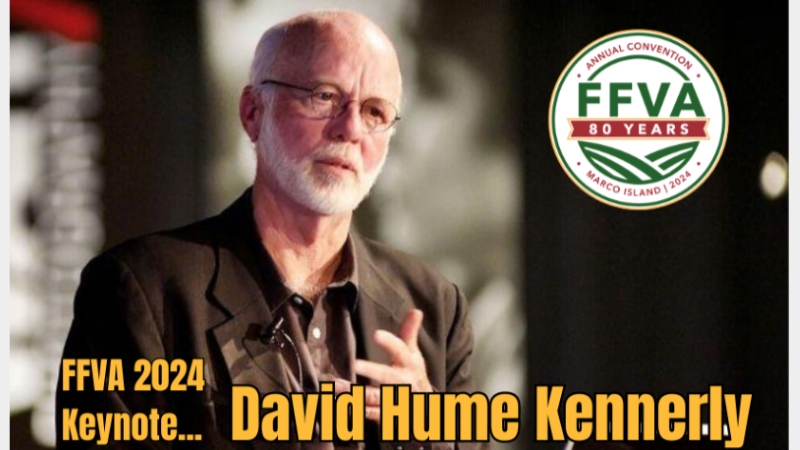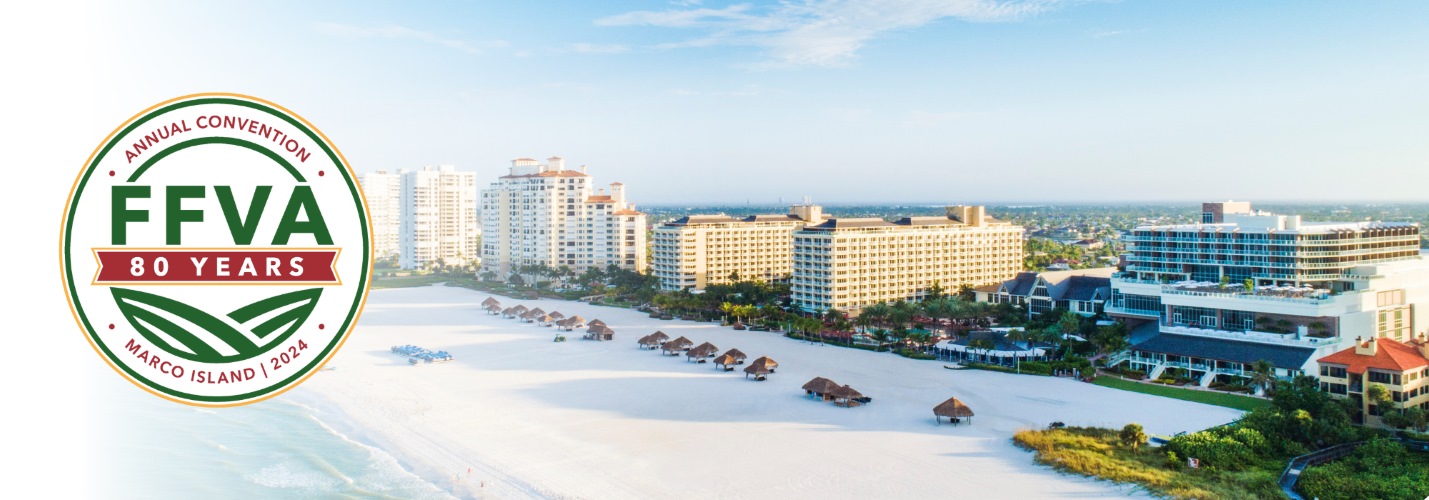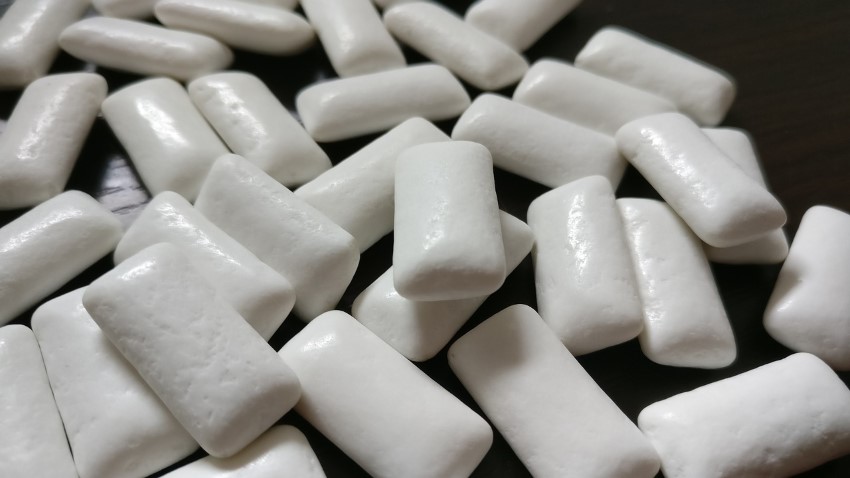Written by: Mick Lochridge
For more than half a century, David Hume Kennerly has viewed our world differently than most of us. Looking through the lens of a camera, the award-winning photographer documented history as it happened, from wars to U.S. politics to celebrities and even to Girl Scout cookies.
Kennerly has pursued his passion for photography since growing up in Oregon. The defining moment that put his future in focus came in 1966, when as a 19-year-old cub photographer for the Oregon Journal he was assigned to cover a visit by U.S. Sen. Robert F. Kennedy. As the senator’s plane was taking off, something clicked.
“The plane’s door closed, and the old DC-3 taxied out and took off,” he recalled. “I felt like Rick in the final scene of ‘Casablanca.’ It was the moment that changed my life. I wanted to be on that plane, to document those who were making history. A career path was chosen.”
Kennerly, 77, will take the Florida Fruit & Vegetable Association down that path as he goes behind the scenes of history during the association’s 80th annual convention, where he will be the breakfast keynote speaker on Sept. 18. The convention will run from Sept. 16-18 at Marco Island.
He will take the audience on a photographic journey to many of the major news stories of the past 50-plus years that he and his camera witnessed – events that include the war in Vietnam, the night Robert Kennedy was assassinated, the Watergate scandal and the resignation of Richard Nixon, the Jonestown massacre, the election victory celebrations of Barack Obama and Donald Trump, and many more.
Actor James Earl Jones once said of Kennerly, “David Hume Kennerly is like Forrest Gump, except he was really there.”
At age 25, Kennerly won the Pulitzer Prize for Feature Photography for a portfolio that included images of the Vietnam and Cambodia wars, and the Muhammad Ali vs. Joe Frazer “Fight of Century” World Heavyweight Championship.
His photos have graced more than 50 major magazine covers, and he was President Gerald Ford’s White House photographer.
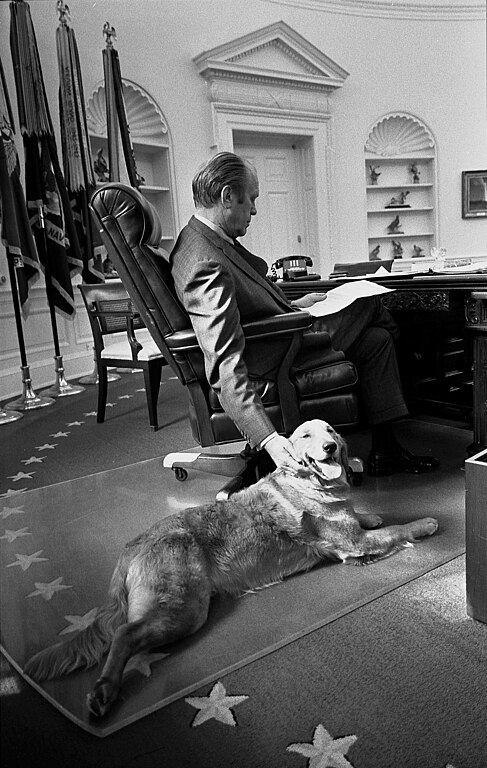
President Gerald Ford in the Oval Office with his Golden Retriever Liberty - November 7, 1974. Credit: David Hume Kennerly
He has photographed 10 U.S. presidents, covered 12 presidential campaigns, worked for newspapers and United Press International, and served as a contributing editor for Newsweek magazine and as a contributing photographer for Time and Life magazines.
The most rewarding part of his career, he said, is “showing people what they need to see, and being at historic events to record them so everyone will know the truth.”
He has written six books and has been deeply involved in several documentaries. He has received a number of honors and awards and is widely recognized as one of the country’s top photographers.
A freelance photographer based in Los Angeles, Kennerly works today in commercial and advertising photography and has a longstanding relationship with Bank of America for corporate photography. His most published photographs are those on the millions of Girl Scout cookie boxes.
To read more about Kennerly and to view his photo galleries, go to kennerly.com.
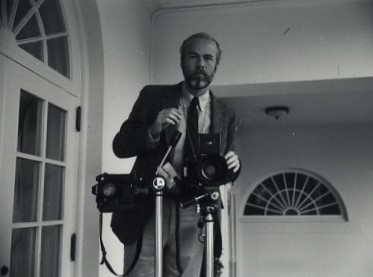
David Hume Kennerly at work at the White House in 1981. Credit William Fitz-Patrick
In advance of his talk at FFVA 2024, here is a Q&A with Kennerly.
FFVA: Was there a specific moment or incident that led you into photography?
David Kennerly: When I was a kid, I saw a news photographer cross police lines to take photos of a fire, to get near the action to cover the story. That really impressed me – the power of a press pass that allows you to see firsthand what was going on and to document it with a camera. When I was a sophomore in high school, my first photo was published on the front page of the school paper. That did it. I wanted to be a photographer!
FFVA: What do you look for when taking a photo?
DK: One of my strengths is being able to tell the story in a single picture. I learned that early on as a young newspaper photographer, and it’s what keeps me going today.
FFVA: How has today’s technology – where everybody walks around with a cell phone camera – changed photojournalism?
DK: I was an early adopter of digital technology. I was not only unintimidated by it but believed it would change the business. It has in terms of beaming up pictures from remote locations particularly. However, the most important element of photography is not the technology, but the eye behind the lens. I get paid for the way I see things, not for the technology that I use. Everybody may now have a camera, but everybody isn’t a photographer. Bottom line is that the true professionals are still taking great pictures not because of digital or film, but because they are good at it.
FFVA: Which television documentaries that you worked on were the most satisfying and why?
DK: I thought “The Presidents’ Gatekeepers” about White House chiefs of staff was very good. The chiefs all opened up about the ups and downs of their job, which is one of the most important in government.
FFVA: What motivated you to write your books? Do you have a favorite?
DK: My first book “Shooter” I thought was the best. I wrote it when I was 32 years old, and it told the story of a kid going from a small lumber town in Oregon to the White House and beyond. To me it was a truly American story, underscoring that anybody can realize their dream no matter where they come from.
FFVA: Is there anything FFVA members should know about you in advance of your keynote session in September?
DK: They should know that at 77 years old I’m still in the game taking pictures!
